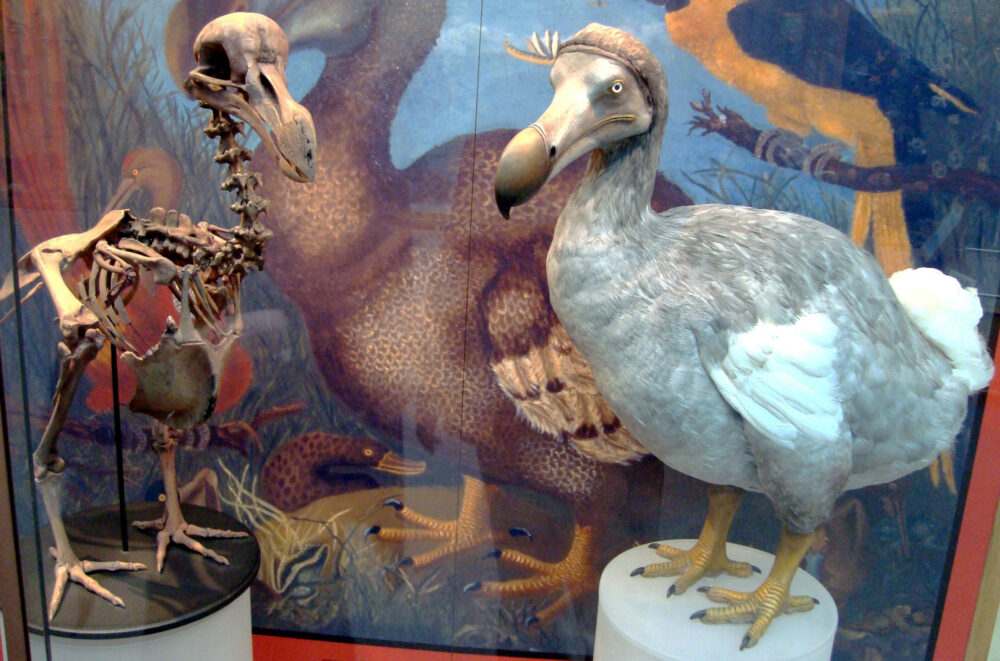While the wooly mammoths, smilodons, and giant ground sloths starred in Disney’s “Ice Age,” do prehistoric creatures have a place on Earth today? When species go extinct, evolution fills the ecosystem gap with modern species, renewing balance and moving forward in evolutionary history. The hot-topic term “de-extinction” describes the process of using genetic engineering to synthesize and reintroduce an organism nearly identical to long-gone ones.
An argument for or against de-extinction must address the disastrous role of humans in this ecological “balance” of Earth. The rapid spread of humanity has caused a catastrophic decline of biodiversity, prompting University of Hawaii’s researchers to call this era the sixth mass extinction, the first “to be caused entirely by humans.” Ecological niche and resource abundance are constantly evolving factors of any species’ success, and this normally allows natural selection to cultivate biodiversity. Since humanity has caused such an upset in these typical processes through habitat reduction, pollution, and introduction of invasive species, de-extinction could be a method of undoing some of our harm.
In a 2015 publication of the Washington University Law Review, UC Irvine professor Alejandro Camacho speaks to the subtle play between natural and human-driven changes, and how to tread carefully when looking to this gray area to enact de-extinction policy. His writing prompts questions like: what species should be brought back, what benefits would resurrection provide, and could resources be more effectively placed towards conservation efforts for extant species?
“With the tools to bring about destruction and resurrection at will, what would the world look like in 100 years?”
Some biologists, like Boris Worm from Dalhousie University, are firmly against de-extinction. Worm states, “Preventing species from going extinct in the first place should be our priority, and in most cases, it’s a lot cheaper.” This cost-benefit analysis is further explored by a philosophy professor from Northeastern University, Ronald Sandler, who agrees that funding for these projects could possibly detract from overall biodiversity efforts, but that this is not always the case. He cites an example of a bird from Martha’s Vineyard, who’s de-extinction efforts are privately funded and focused on restoring not only the bird but the whole ecosystem.
There could also be implications for de-extinction with relation to climate change and the future of bioengineering. Part of the effort to restore the Earth to a stable state is the attempt to slow the rising global temperatures, which de-extinction could help with. Shlomo Cohen, a philosopher from the Ben-Gurion University of the Negev in Israel, writes in Nanoethics about the potential benefits of reintroducing mammoths to tundra environments. This research has the potential to build up carbon-sinking grasslands as well as develop cutting-edge genomics research.
“The rapid spread of humanity has caused a catastrophic decline of biodiversity, prompting University of Hawaii’s researchers to call this era the sixth mass extinction.”
One excellent case study is the dodo. Colossal Biosciences, an established de-extinction company with offices in Texas and Boston, recently declared, “the dodo bird is a symbol of man-made extinction. A glaring example of the price of carelessness. It is our intention to partner with the government of Mauritius to establish a foundation for the de-extinction and rewilding of the beloved bird we all dearly miss.” What makes the dodo such an interesting subject is its history and clear cause of extinction. Native only to the small island of Mauritius in the Indian Ocean, these flightless birds lived peacefully until humans arrived. We brought with us rats, cats, dogs, among other animals, which quickly developed a taste for the dodo’s eggs. While many species of large birds only lay one egg at a time, the dodo’s unique lack of caution, corresponding to a lack of natural predators, left them vulnerable and defenseless. Their sharp decline is directly attributed to hunting and this lack of prey instinct.
So, would bringing back the dodo and putting in place environmental protections for their population be worth it? It would forge a path to increasing biodiversity on the island, where not only the dodo but 23 other native species are also extinct, and nine endangered. It may also set a precedent that would allow humanity to hold the controls of biodiversity on the whole planet. With the tools to bring about destruction and resurrection at will, what would the world look like in 100 years? It is up to us to study the ethical questions and options to become better informed and ensure that the species we resurrect return a net positive to our world’s ecosystem, and are not just alive to bolster our zoos.
Image courtesy of Wikimedia Commons






